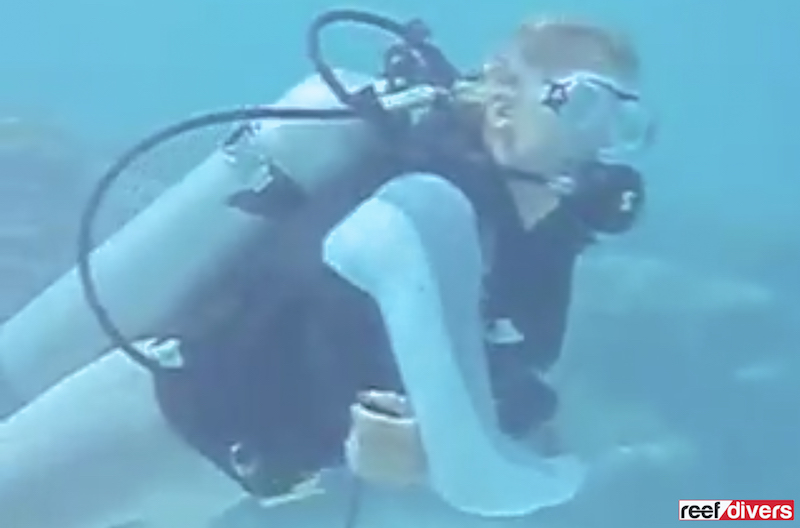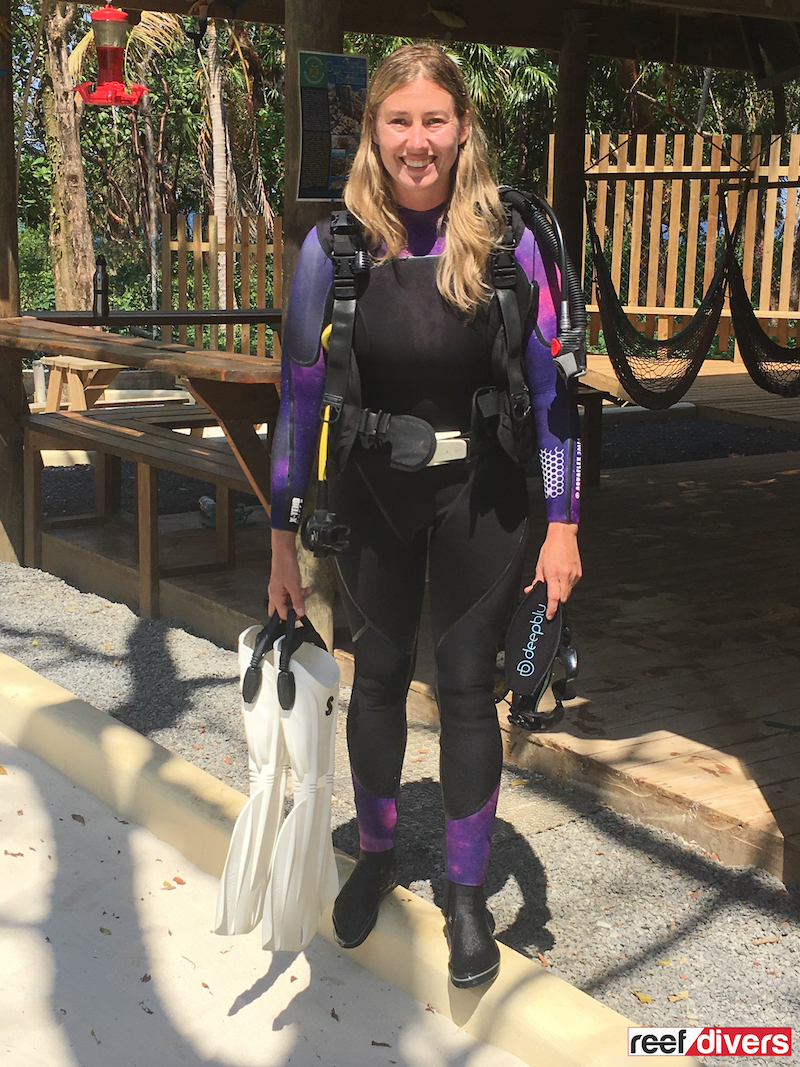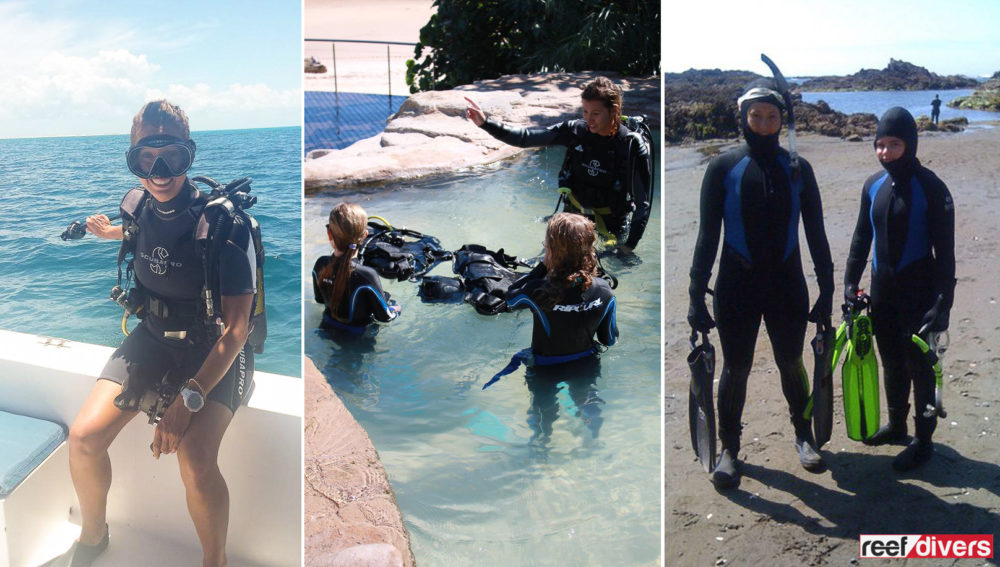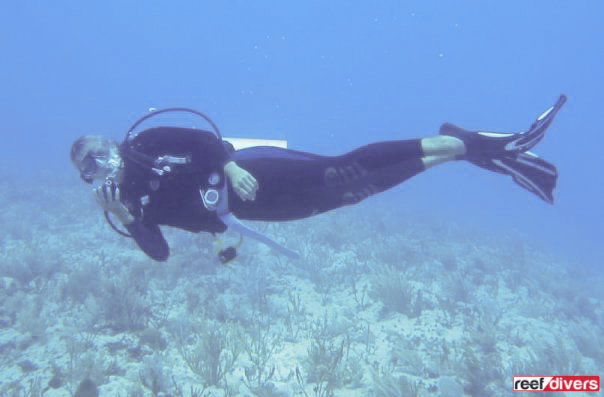My Love Of Wetsuits
If you’re a regular reader of ReefDivers you will know that I love wetsuits. The obsession started back when I was a divemaster. I feel in love with that feeling of zipping up my wetsuit, hoping in the water and leading a dive.
When I first started diving I will admit to being scared. I wasn’t afraid of breathing underwater, or clearing my mask, nope I was afraid of damselfish. My wetsuit became my uniform and the moment I closed the zipper, I felt protected.
Having my own wetsuit helped me feel confident and in control of the dive. When I put on my wetsuit all fears went away and I was able to relax and enjoy the reef. Plus I totally hate being cold underwater, so nothing beats a comfy new wetsuit.
One of my all-time favorite wetsuits was this slick gray Roxy wetsuit from 2008. I felt like a dolphin and honestly loved to dive just to put on the wetsuit! You can watch the very first dive video I ever made here, featuring this beauty.
Why Buy
If you are a certified diver or just starting out, you should look at purchasing your own dive gear. The first piece of equipment I would recommend for any diver is to buy their own mask. Everyone has a different face, and there are hundreds of styles of dive masks to choose from. Having a properly fitting mask is essential.
Second, I would recommend every diver buy their own wetsuit. Sure some people might not agree, and there are divers who don’t like wearing wetsuits. But if you want to stay warm and protected from the environment like me, you should buy your own wetsuit. Here are four reasons I think every diver should own a wetsuit.
1. Hazards

Wetsuits cover your body and protect you from hazards. Underwater, divers need to look out for sharp rocks, jellyfish, sea anemones and other stinging marine organisms. While we should always dive well above the reef, without a wetsuit you could get cuts and stings.
We prefer wearing full-length wetsuits to feel protected from head to toe. Shorty wetsuits cover your core, but your legs and arms are still exposed. Scuba diver should always be in control of their own buoyancy and be able to hover a meter or so above the reef. You should do this to avoid damaging any corals or disturbing the sediments.
2. Warmth
Wetsuits are made with different thickness. The thinnest are 1mm lycra suits up to full 7mm thick neoprene. For tropical diving you will most likely need a 2.5mm, or 3mm wetsuit. When buying a wetsuit for warmth you have to consider your own experience. Are you normally cold or hot? Try scuba diving in a rental wetsuit a few times with the thickness the dive shop recommends.
Try scuba diving in a rental wetsuit a few times with the thickness the dive shop recommends. Did you feel cold during the dive while your buddy was fine? Everyone is different with their tolerance to the water temperature. Find out your tolerance before making a purchase.

Again I hate being cold so I can dive in a 3mm wetsuit and be happy while my buddy is diving in shorts with no wetsuit. Full-length wetsuits will keep you warmer than a shorty wetsuit and I like having my arms and legs protected.
When choosing your wetsuit you want it to be tight enough to keep water inside but NOT tight enough that you can’t breathe. Pay attention to the neck, if the neck feels tight you need a bigger size.
3. Buoyancy
New divers often struggle with buoyancy and using different wetsuits every time you dive doesn’t help. Wetsuits are made from neoprene, and the more you use a wetsuit the more the neoprene becomes compressed and thin.
There are air bubbles inside neoprene so new wetsuits and more buoyant than an older wetsuit. If you do your first dive with an old well-worn suit followed by a dive in a brand new wetsuit you will need to adjust your weight.
Having your own wetsuit means every time you dive you can check in your logbook and see how much weight you use before.

4. P
Let’s admit it, people pee in wetsuits. If you don’t wanna be swimming in someone else business, it’s time to buy your own wetsuit!


